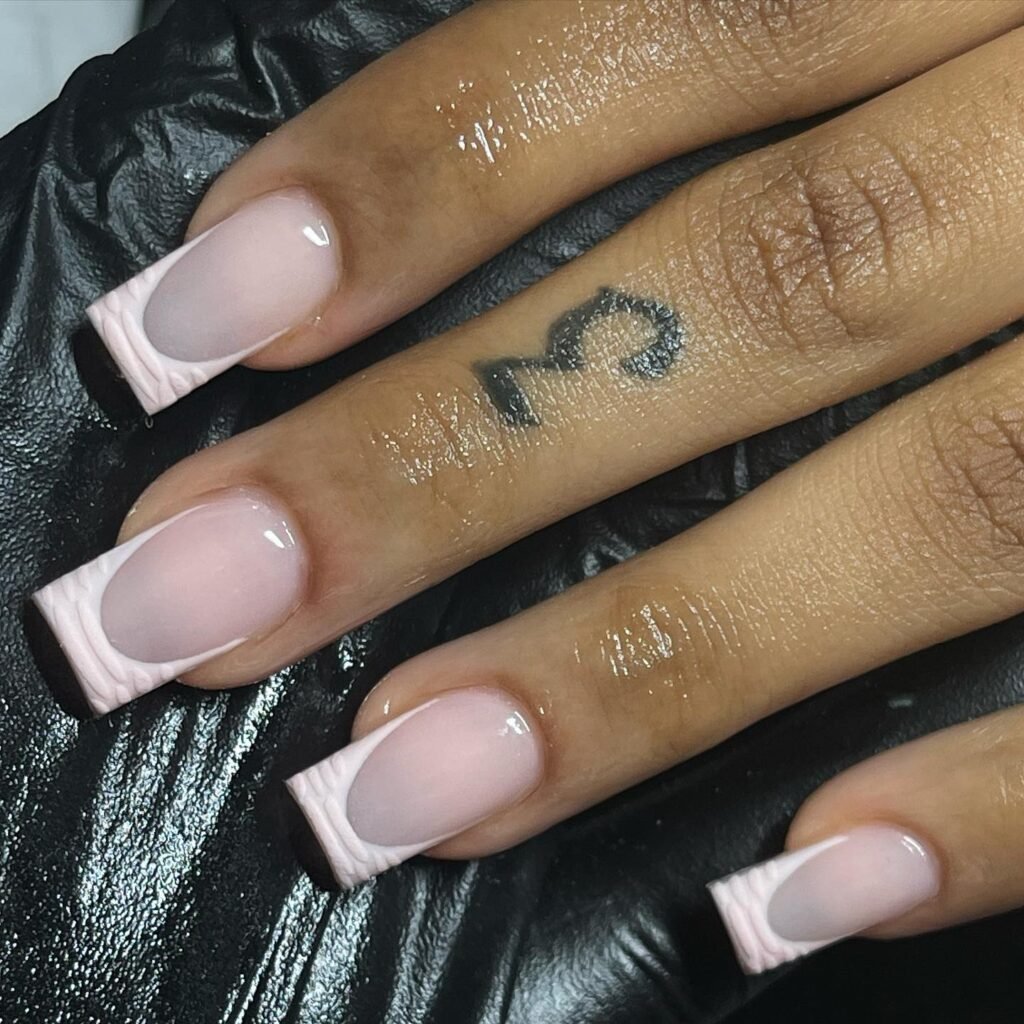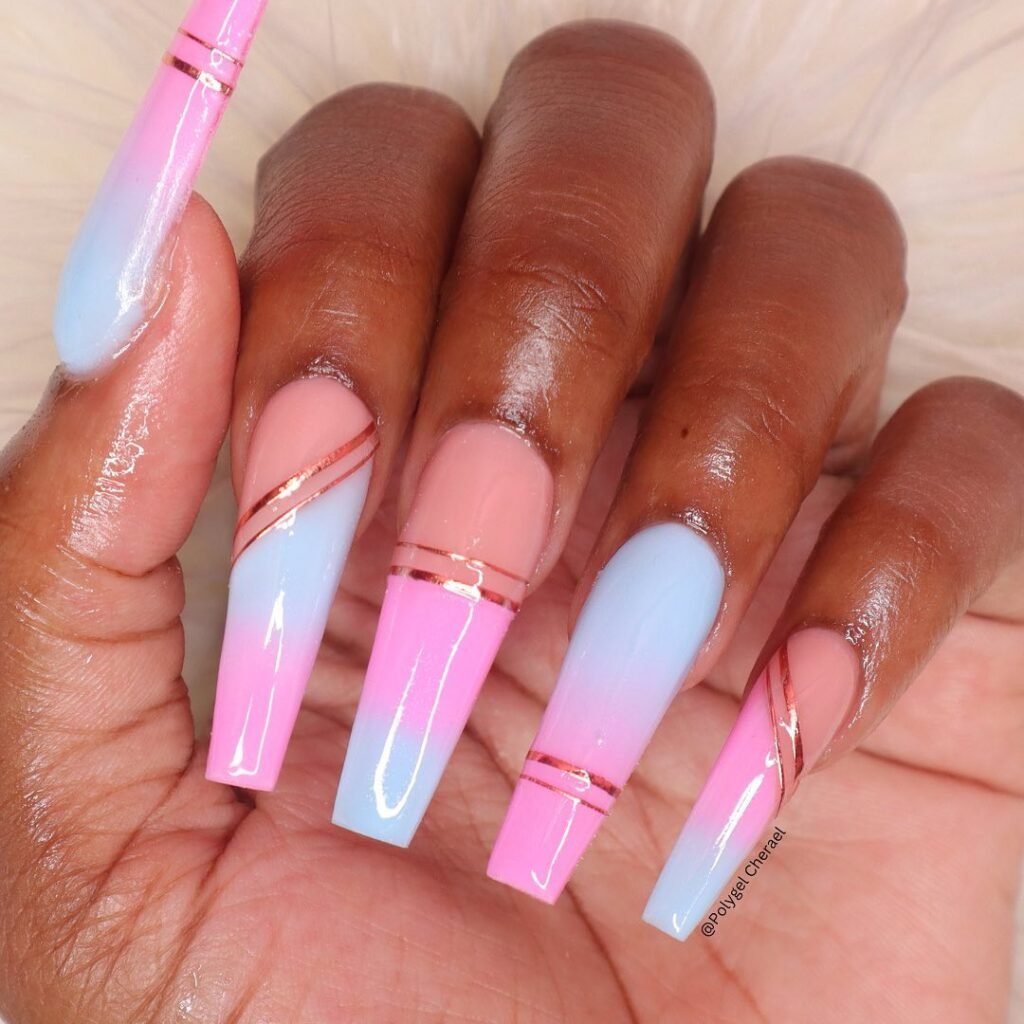The nail care industry has revolutionized, and manicure techniques have become diverse with the accessibility of a wide range of options. There are so many options on the market these days, and many women wonder which type of artificial nail is right for them. Polygel or acrylic? Which nails should you get?
Polygel Vs. Acrylic: Overview
Because of their durability and ability to last longer, acrylic and polygel manicures are two of the most popular manicure options. Knowing which is better depends on your lifestyle and how long you plan to keep your extensions, budget, and maintenance.
Polygel Nails
Polygel nails are quite a new fashion in the manicure industry. Polygel nails are a hybrid of acrylic and gel nail paint formulas. It is a nail enhancement best described as a hybrid formula that combines the durability of acrylic nails and the elasticity application of gel nails. It is formed with acrylic powder and clear gel. It looks like normal nail polish but dries under UV light like its gel nail polish counterpart.
Polygels are usually feathery on the nails. It feels like any other nail polish and is loved by customers who prefer the minimalist aesthetic. It has no particular smell and is excellent for people who are allergic or cannot withstand a pungent smell.
Polygels can generally be cured in two ways: an LED lamp for thirty seconds or a UV lamp for two minutes. This depends on the nail technician and their preference or the customer’s choice.
One benefit of polygel nails is that they are durable and less likely to chip or break, making them ideal for women who lead active lifestyles or have jobs requiring frequent use of their hands.
Polygel nails can last up to six weeks without needing to be replaced, although you may need to get them filled every few weeks to maintain their appearance.
Acrylic Nails

Acrylic nails, popularly known as artificial nails, are a type of nail enhancement created by mixing a powder and liquid monomer applied to the nail and air-dried following a topcoat. Making acrylic nails involves mixing a liquid monomer with some inhibitor; typically, ethyl methacrylate is used. The mixing process forms a moldable bead.
Acrylic nails are nail extensions placed over your natural fingernails and are meant to change the appearance of real nails. They are an excellent option for those who have shorter nails and are looking for a manicure that will last a long time as the formula holds up to 4 weeks and can be refilled. Acrylic nails are made using acrylic glass.
Dip powder is used to give acrylic nails color. Acrylic nails require little maintenance and may be quickly filed into various shapes and sizes. They are also affordable and fairly easy to apply and remove, making them a great option for women who want to switch up their looks frequently.
Differences Between Polygel Vs. Acrylic
A few factors set poly gel apart from acrylic. The two can be distinguished by cost, odor, flexibility, sanitization, and durability. Both have benefits and drawbacks, so it’s wise to be aware of both before deciding.
1. Their Make
To develop a less harmful composition, polygel incorporates qualities from both acrylic and gel nails. Nail stylists use pea-sized quantities of polygel on each nail. In contrast, acrylics are artificial nails layered on top of your natural nail and applied with a powder monomer.
2. Variations
Acrylics can be done in any print, design, or color. Polygels, on the other hand, is available only in six colors – soft pink, cover pink, dark pink, natural clear, and bright white. So acrylics are considered more versatile than polygels.
3. Application Method
Polygel nails are easier to apply compared to acrylic. This is because Polygel comes premade, meaning you can use them just out of the tube. Unlike acrylic, you need to mix and get the right liquid-to-powder ratio. Also, polygel’s paste-like consistency allows them to be applied using plastic dual forms. – which is quick and easy to use.
The technique for drying both nail types differs greatly. Acrylics are air-dried, while polygels are mostly dried under UV light.
4. Removal Process
When it comes to removal, acrylic nails are typically easier to take off than polygel nails. This is because the glue used to attach acrylic nails can be dissolved with acetone, while polygel nails must be filed down. Acrylic nails must be soaked in acetone for removal, while polygel have to be buffed off.
5. Cost
Compared to polygel, acrylic nails are more affordable for nail maintenance. In a typical salon, Polygel will be more expensive than acrylic, and the price for both will vary greatly depending on the design you want, your location, and the type of salon.
If you plan to do it at home, though, polygel tends to be more affordable and easier than trying to DIY with acrylic. Regardless, it would be best if you don’t do it at home.
6. Durability
Acrylic nails will usually last much longer than polygel. Polygel will last about 3-4 weeks, while acrylic can last anywhere between 6-8 weeks.
At the same time, for acrylic nails to last that long, they will need a refill every three weeks or so to cover the growth gap at the back of your nails.
However, Both nail types are less likely to chip or break easily.
7. Feel and Appearance
Compared to acrylic nails, which are thicker and bulkier, polygel nails seem more natural since they are lighter and more flexible.
Acrylic is rigid and harder, so any hit or damage to the acrylic nails is passed on to your natural nails. In contrast, polygel is flexible, and you don’t feel hits as much.
Polygel nails also have a nice glossy sheen compared to acrylic ones. But after a top coat is applied, acrylic may also acquire the same glow.
8. Smell
Acrylic has a strong smell. It is impossible to ignore the stench of the chemical whenever someone goes in to get their nails renewed or filed down, removed, and replaced.
Applying Polygel to your natural nails won’t smell anything because it has no odor.
9. Safety
There are potential risks to your natural nails with both acrylic and polygel. Most nail products can harm your natural nails, which generally happens when fixing or removing the nails. But compared to acrylic, polygel nails are usually better for your natural nails.
Acrylic nails are difficult to remove, and some nail techs will use very harsh chemicals during applications, which increases the chances of damaging your natural nails with acrylic.
Polygel has a simpler application process and is easier to remove, making it safer for your natural nails.
Are Acrylic Nails Better Than Polygel Nails?
You may improve your natural nails using acrylic gel and polygel, respectively! Both might allow you to switch things up from ordinary nail paint.
To determine which manicure best meets your needs, think about the qualities you value most in a manicure, such as length, durability, etc.
Polygel nails are the preferable choice due to their cost and healthy nails. A polygel manicure may be removed and barely hurts the nail beds. Additionally, polygel costs are generally lower. Remember that either manicure may cost more if there are additional extras, such as tips.
With a kit, you may quickly and easily perform a polygel manicure at home. You may fix any chips or stains you notice without making an appointment. Nails are given a firm base and are easy to remove and reapply without hurting the fragile natural nail bed.
Acrylics are more costly since they require many visits for removal and maintenance. While acrylics endure longer than polygel, they also require more maintenance because of the extensive damage they produce.
The removal of acrylics can sometimes be unpleasant. Acetone soaking is required for removal; occasionally, the buffing procedure is not the most enjoyable. Any other attempt to get rid of it will be uncomfortable, aggravating, and could even harm the nail bed.
If you don’t get fresh acrylics applied, you’re looking at many weeks of healing time because the damage from acrylics persists long after the color has faded.
While polygel is a novel technology, acrylic nails have been used in the manicure business for a long time. However, polygel has gained popularity due to its benefits.
Regardless of the type of manicure, always consider giving your natural nails a breather between applications and removals. Make sure to take breaks sometimes so they can develop without product.

